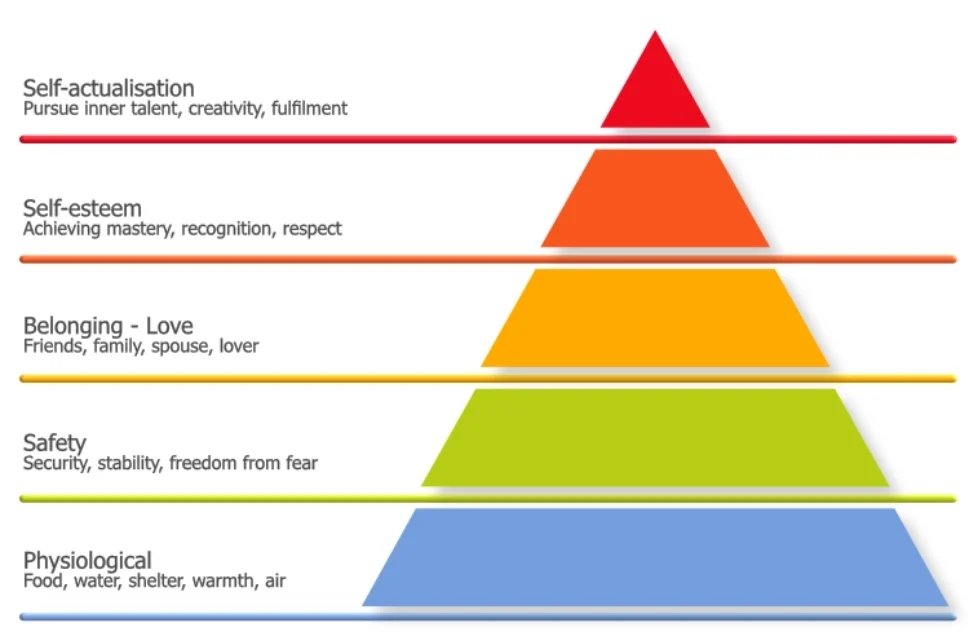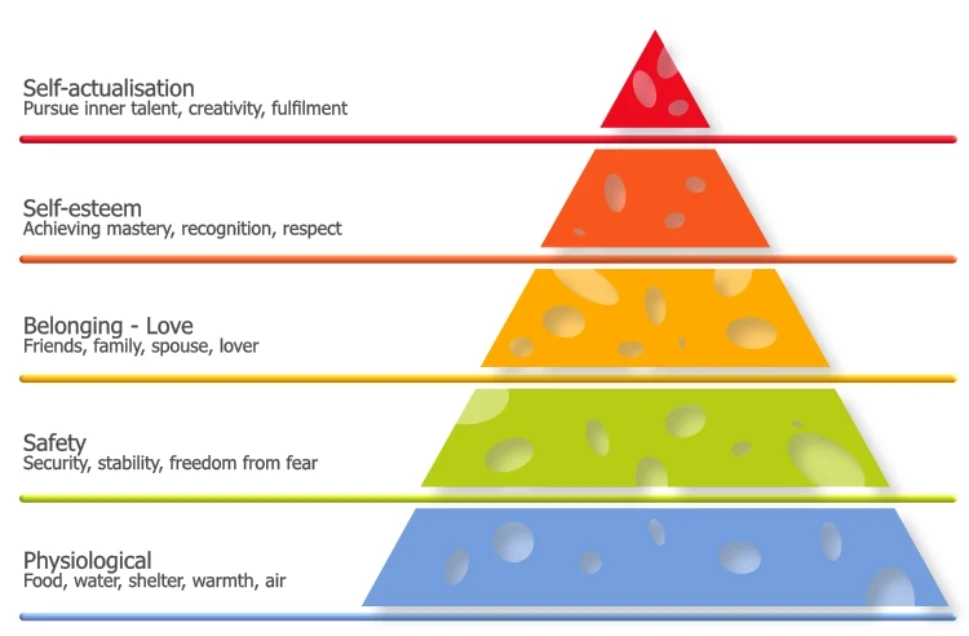Hierarchy of Needs
Abraham Maslow 1954
Table of Content
Definition
If you look up ‘Maslow hierarchy of needs’ you’ll be overwhelmed by the many links, information, misinformation, interpretations and misinterpretations you can find. If you do an image search, you’ll find a plethora of creative endeavours trying to represent his pyramid (and I’m not claiming the one on this page is the best!). Rather than given you information based on one of the many interpretations I’ll try and go back to the (primary) source of the theory.
Maslow’s theory is also easy to understand in an overly simplistic way, which I’ll try and avoid without writing a book about him on here.
A key concept for Maslow is self-actualisation which he describes as: “A musician must make music, an artist must paint, a poet must write, if he is to be ultimately at peace with himself. This need we may call self-actulalization.” (Maslow, 1954, p. 46). In his book (1954) he argues that even if the other needs are fulfilled, soon the individual will feel an itch form more, as if there is something missing. In some interpretations, money to do what you want is the driving factor to self-actualisation, but you can see from Maslow’s own words that there is more to this.
In his discussion of physiological needs Maslow argues in favour of (some of the) many version of the pyramid out there in that he argues that there is no absolute definition of what the physiological needs are. He goes even further by claiming it would be pointless to try (Maslow, 1954, p. 36). He comes from an argument based in science but even experientially we can claim that individuals have different basic needs. Some are less debatable in that they are needed for the body to function normally, but others, such as sexual gratification, is less clear as the small percentage of asexual people will testify. Maslow also uses the level of physiological needs to make another important point. He argues that if all other needs go unsatisfied, the focus may be entirely on the individual’s physiological needs, and the other needs may become non-existent (Maslow, 1954, p. 37). This implies that the drive of the person is entirely focused on physiological needs and the pyramid disappears or collapses into the base layer. In very particular circumstances, all the other capacities are put in service of satisfying hunger.
However, in more or less normal circumstances, if physiological needs are reasonably fulfilled, a need for safety will arise (Maslow, 1954, p. 39). This supports the popular argument that needs follow on from each other with self-actualisation as the last need to arise. The lower tier to the one the individual is seeking satisfaction for is underestimated because fulfilled and everything else appears to make way for the need to fulfil the need for safety, having moved on from the physiological tier (Maslow, 1954, p. 39).
If there is a threat, for instance to the fulfilment of safety, the upper tiers have a tendency to not matter in the individual and they are fully concentrated on the tier that is being threatened (Maslow, 1954, p. 43).
In spite of Maslow arguing for a ‘flow’ from bottom to top, he posits that the fixed order is not as rigid as is implied (Maslow, 1954, p. 51). He lists that there are some significant exceptions. The supposed rigidity of Maslow’s model is often quoted as a weakness and a criticism, but his recognition debunks this rigid interpretation of his hierarchy of needs. I’m sure you’ve recognised this in yourself as well, as I have within myself. The different tiers don’t need to be completely fulfilled to move on to the next tier, which is why I have half jokingly created the ‘Swiss cheese’ version of the pyramid below. This will not be the case for everyone however. Maslow describes this as ‘reversal of hierarchy’ (Maslow, 1954, p. 52) but I would argue, from experience, for a ‘hotchpotch of hierarchy’ in the sense that for me at least, the top tier doesn’t suddenly become the bottom tier, but there is a mix of focus on different tiers according to which need is more pressing. But on the whole, I have holes in every tier. No tier is fully satisfied in any sense and some tiers have larger holes than others, as it were. How does this interpretation work for you? (It could just be me!!). The strict interpretation is one of folk theory I would argue and the ‘Swiss cheese model’ is fully recognised by Maslow himself in that he argues that contrary to the strict model, any normal [sic] person’s layers or tiers will only be partially satisfied (Maslow, 1954, p. 53, 54)
The Swiss Cheese Model of the Pyramid
Maslow also sees these ‘reversals of hierarchy’ as exceptions, and as reversals they maybe are. I feel that the model as it is interpreted in the strictest sense is the exception and the ‘Swiss cheese model’ is the rule. What do you think? Is the slider to the left or to the right for you?







